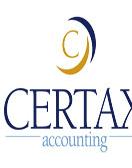The dividends is where you have a share of the after-tax profit of a company. It is distributed out to its shareholders according to the number and class of shares that they have. Smaller companies tend to distribute the dividends at the end of the accounting year. Larger companies usually distribute it every 3 months. The amount of the dividend is decided by the board of directors within that company, who also determine whether it is paid out of the current earnings or the past earning kept as reserve. Holders of ordinary shares are entitled to receive any amount of dividend based on the level of profit.
The dividend allowance is £5,000. You won’t have to pay tax on the first £5,000 of your dividend income. This allowance is for anyone who has dividend income. You will pay any dividends tax if you receive over £5000 at these 3 rates:
1) If your income tax falls within the basic rate band, then you would have to pay 7.5% tax on dividend income
2) If your income tax falls within the higher rate band, then you would have to pay 32.5% tax on dividend income
3) If your income tax falls within the additional rate band, then you would have to pay 38.1% tax on dividend income.
Dividend tax rates 2016/17
The allowance for dividend tax is still £5,000. For the dividend ordinary rate, it has gone down from 10% from the previous year to 7.5%. For the dividend upper rate, it has stayed the same as the previous year. For the dividend additional rate, it has gone up by 0.6% to 38.1%
You don’t have to pay tax on dividends from shares if it is in an ISA or if you receive dividends by pensions. They plan to decrease the divided allowance in 2018/2019 from £5000 to only £2,000.

